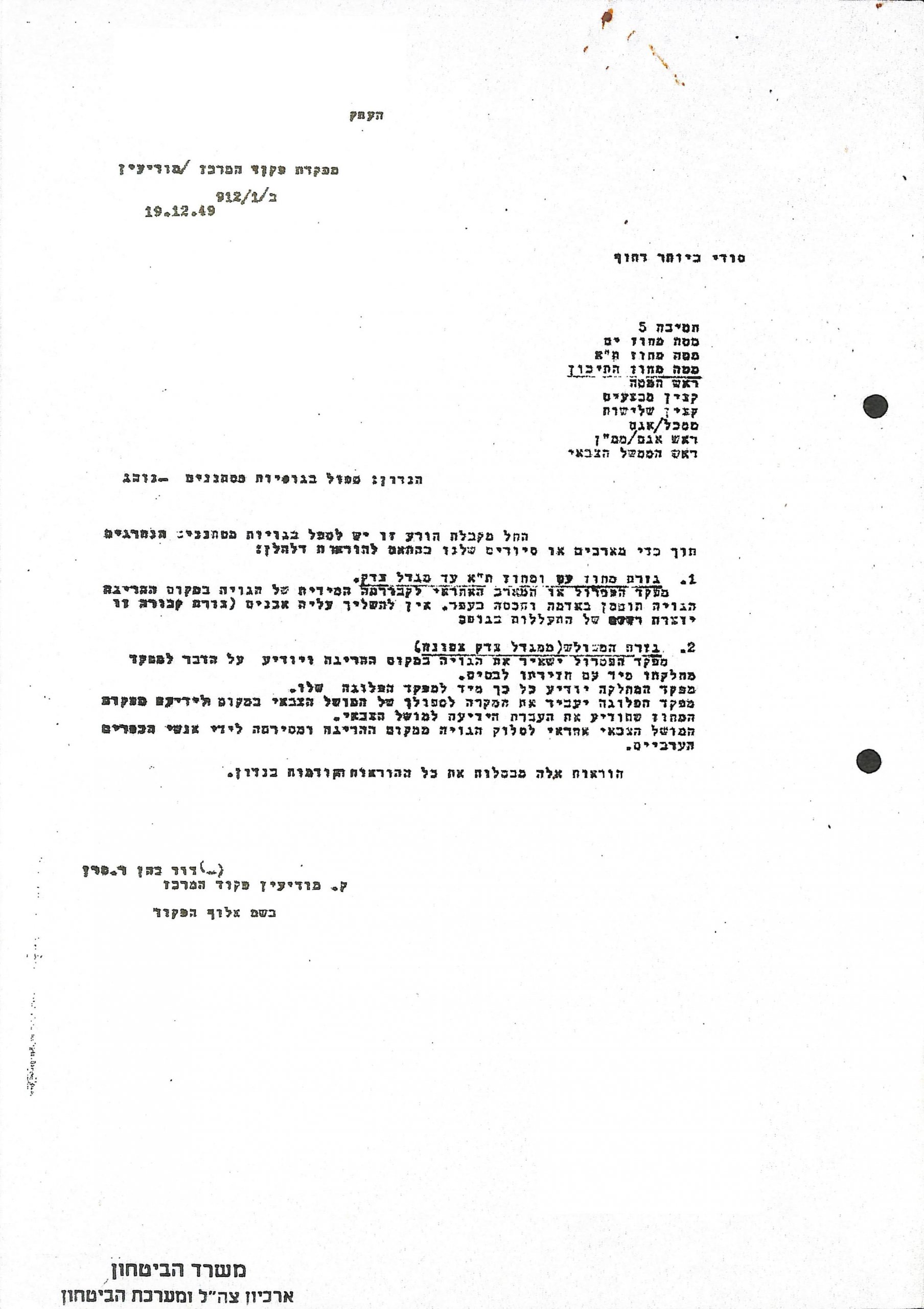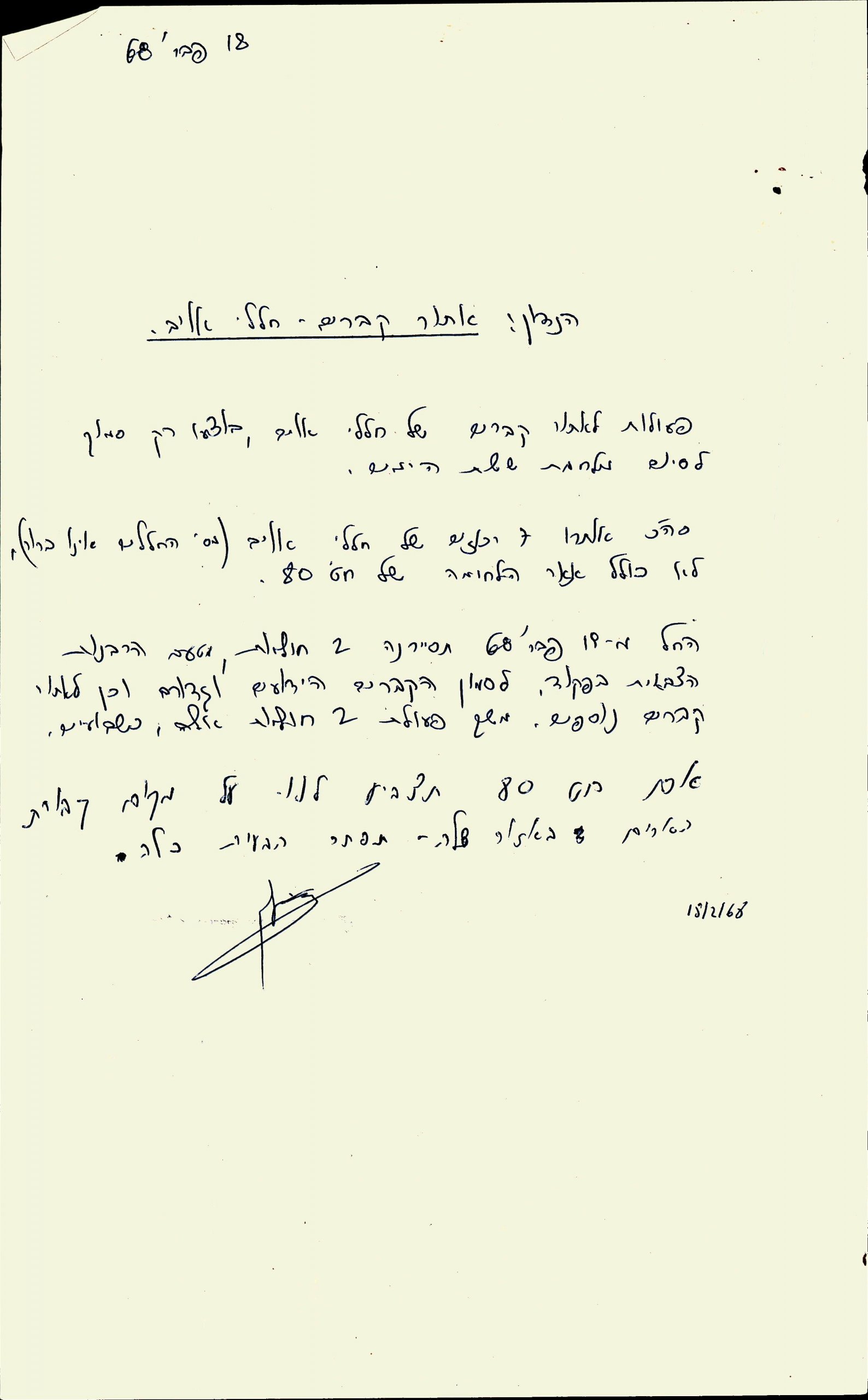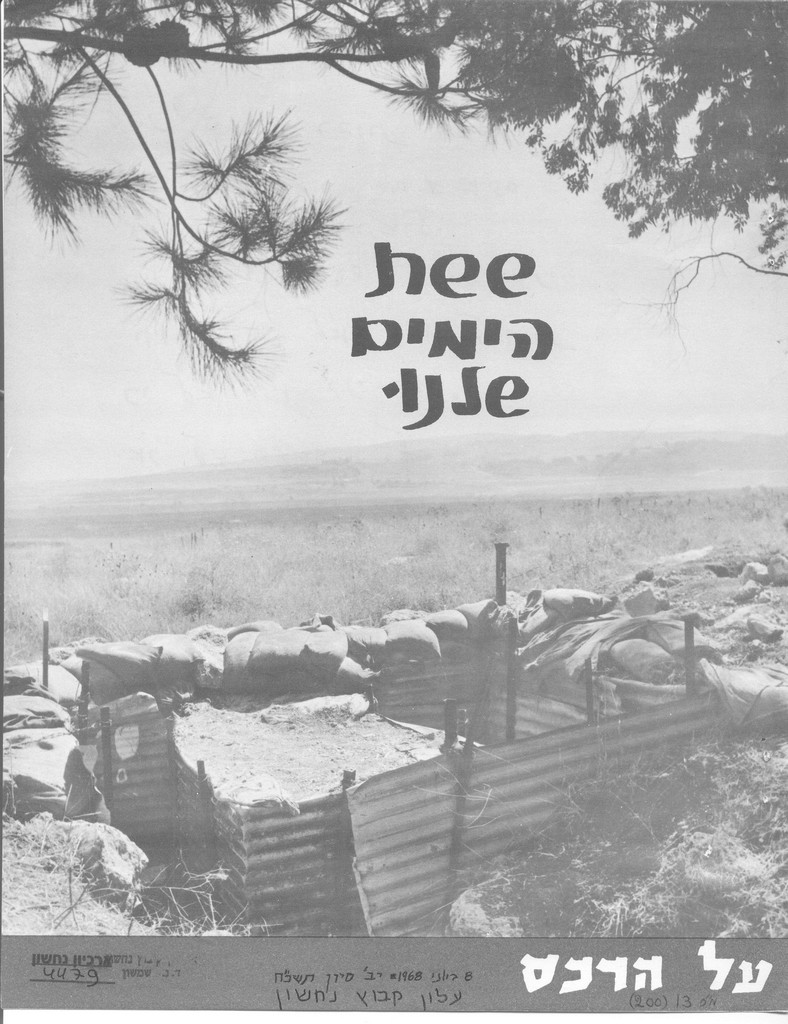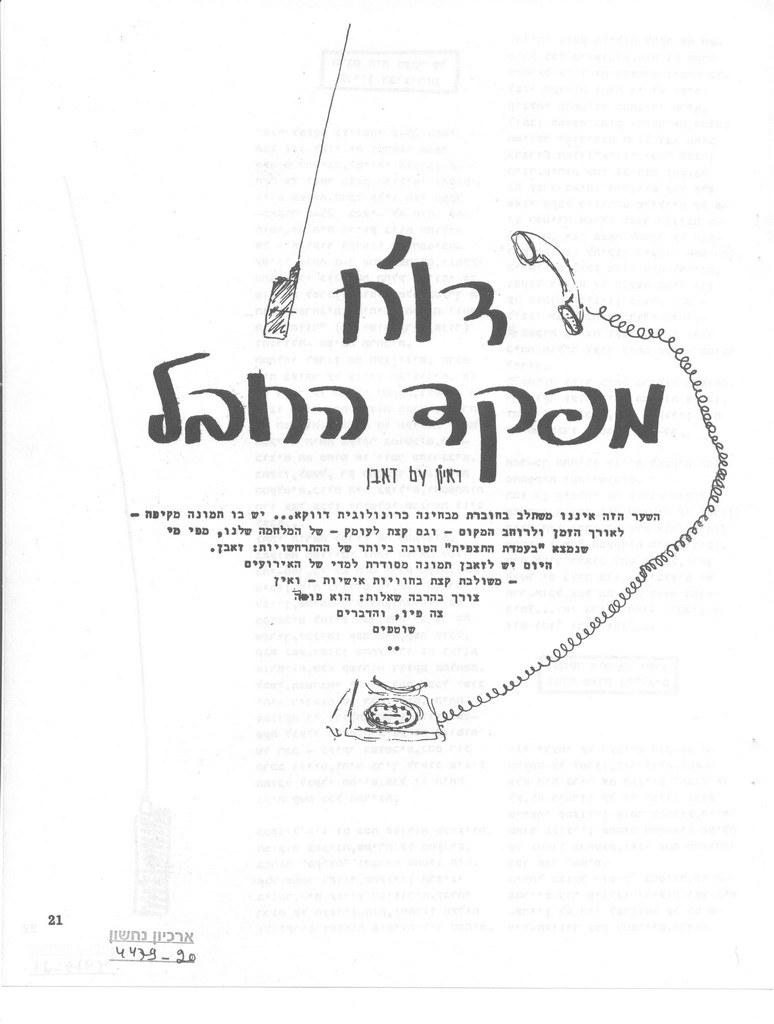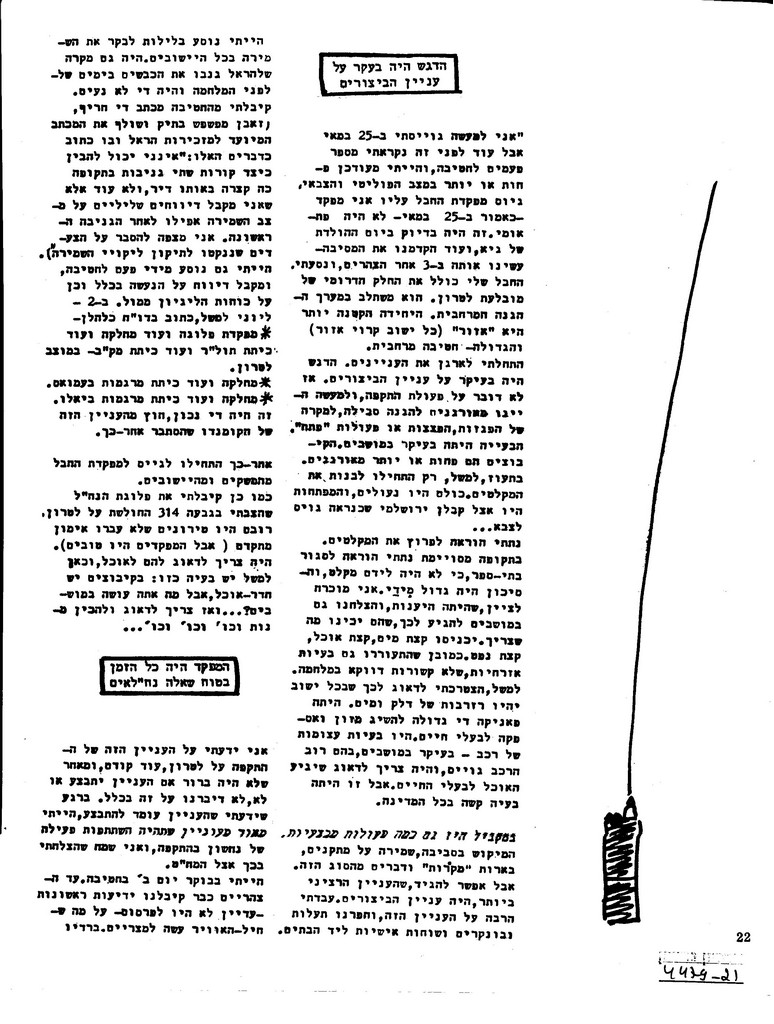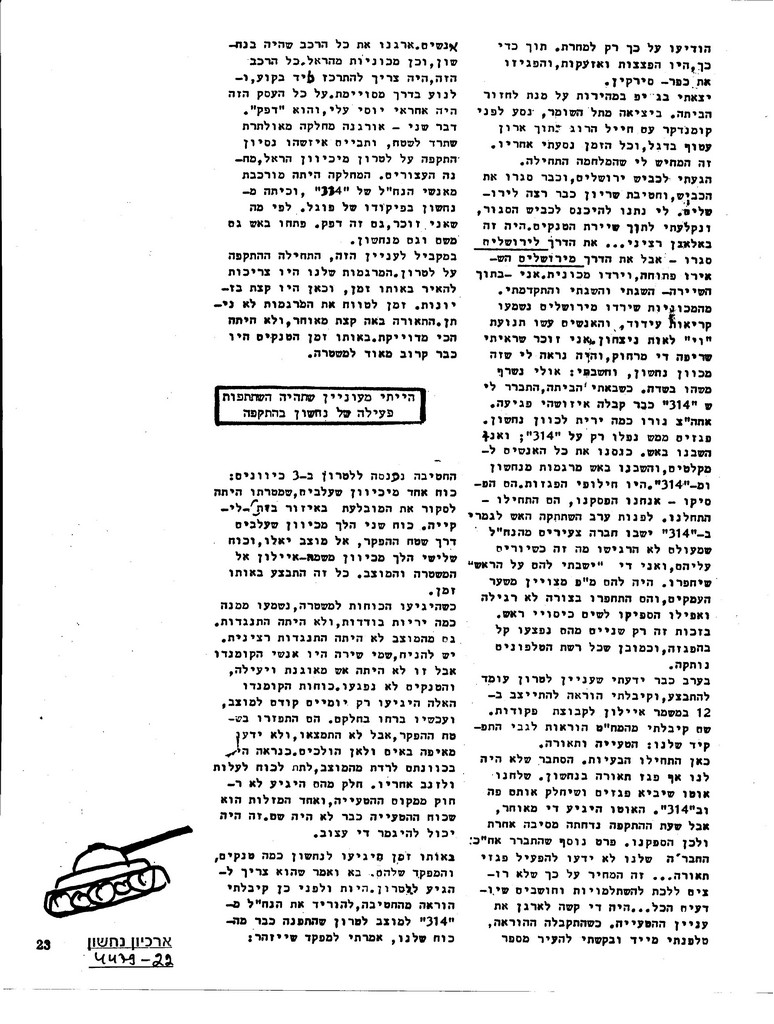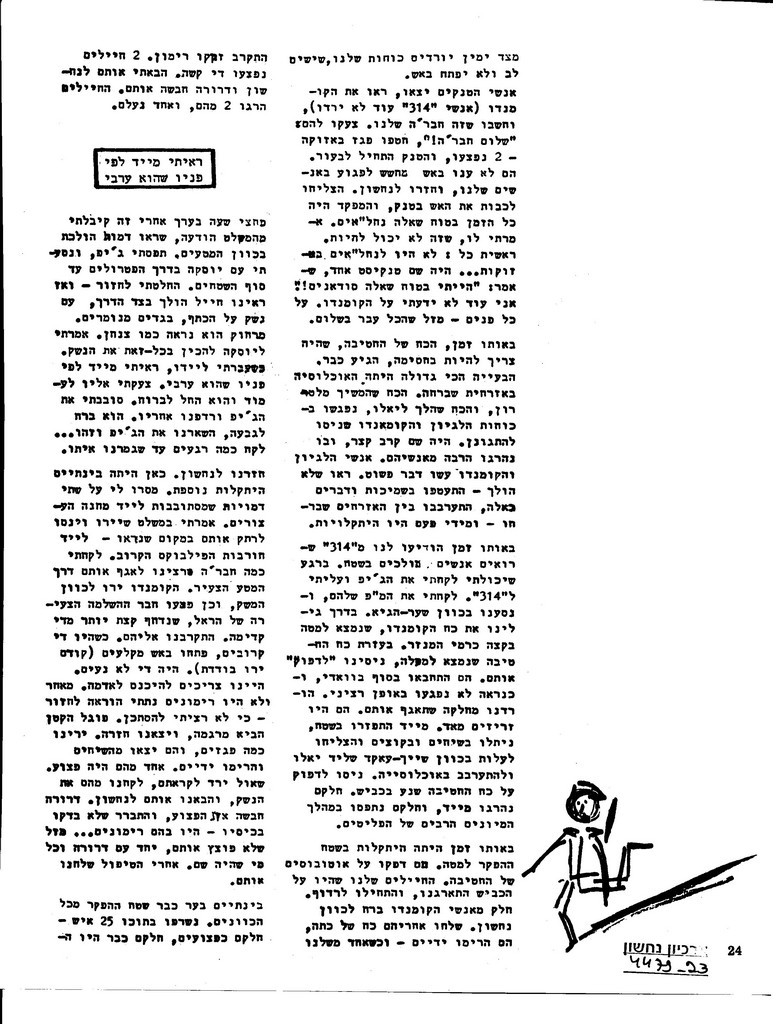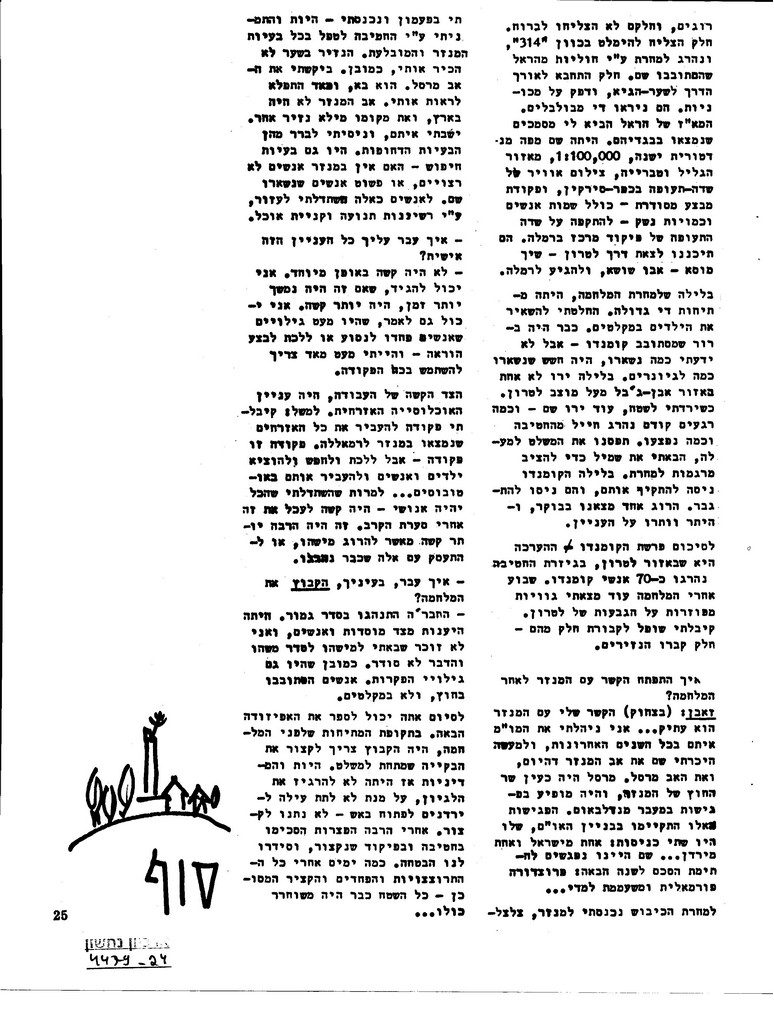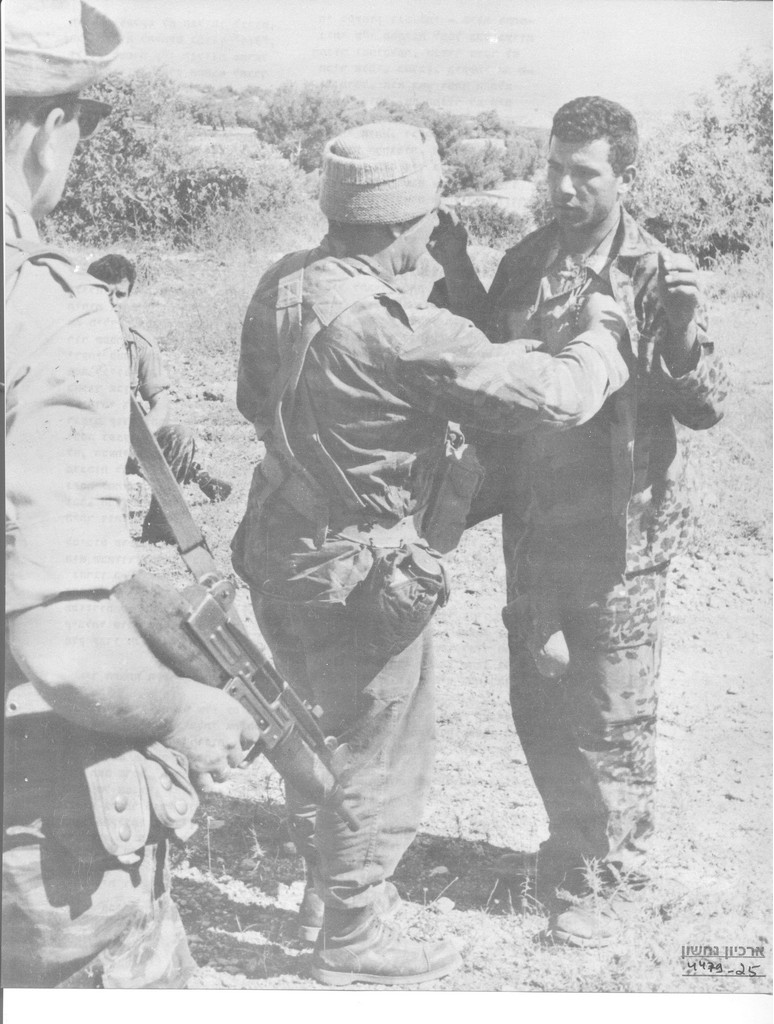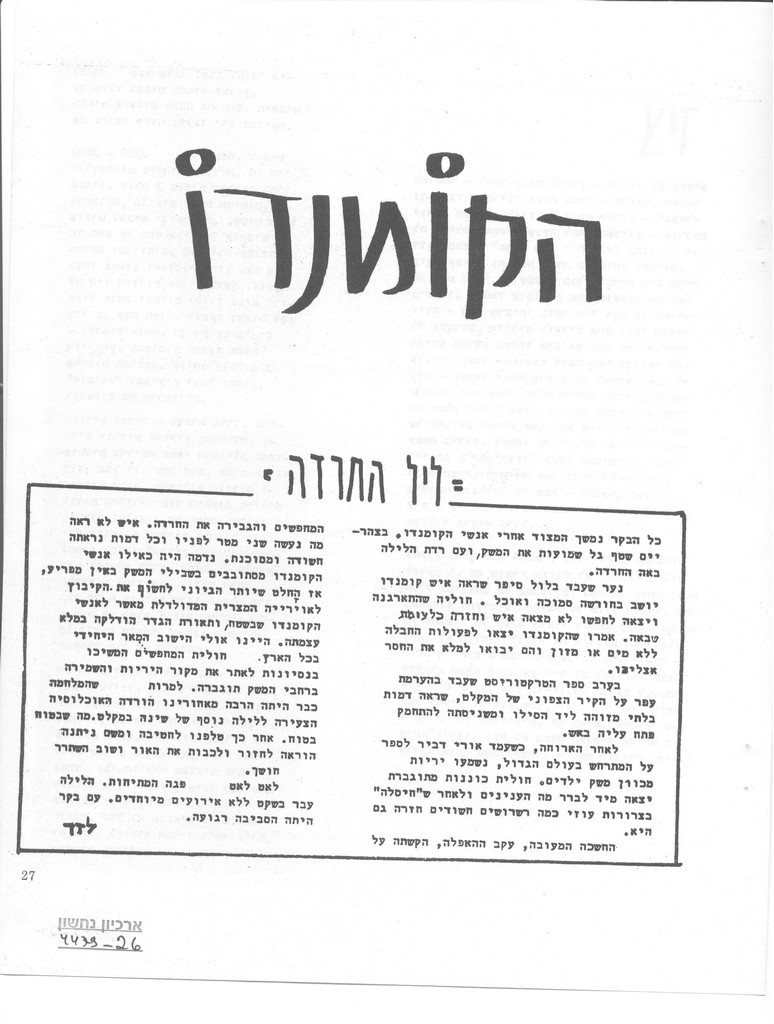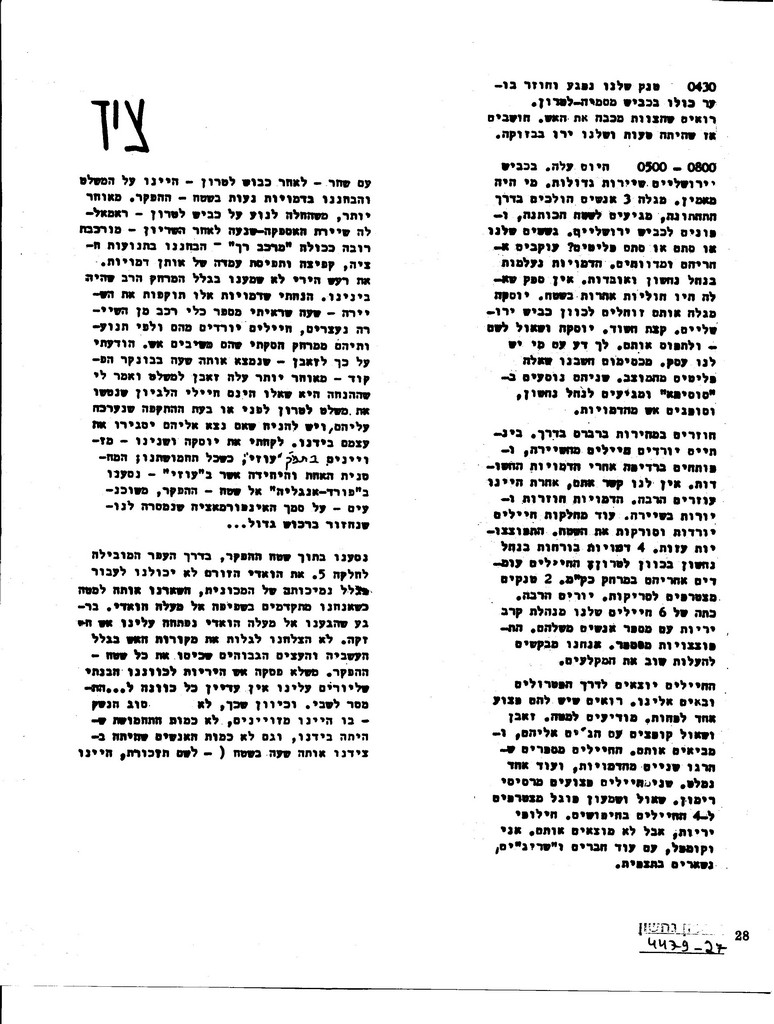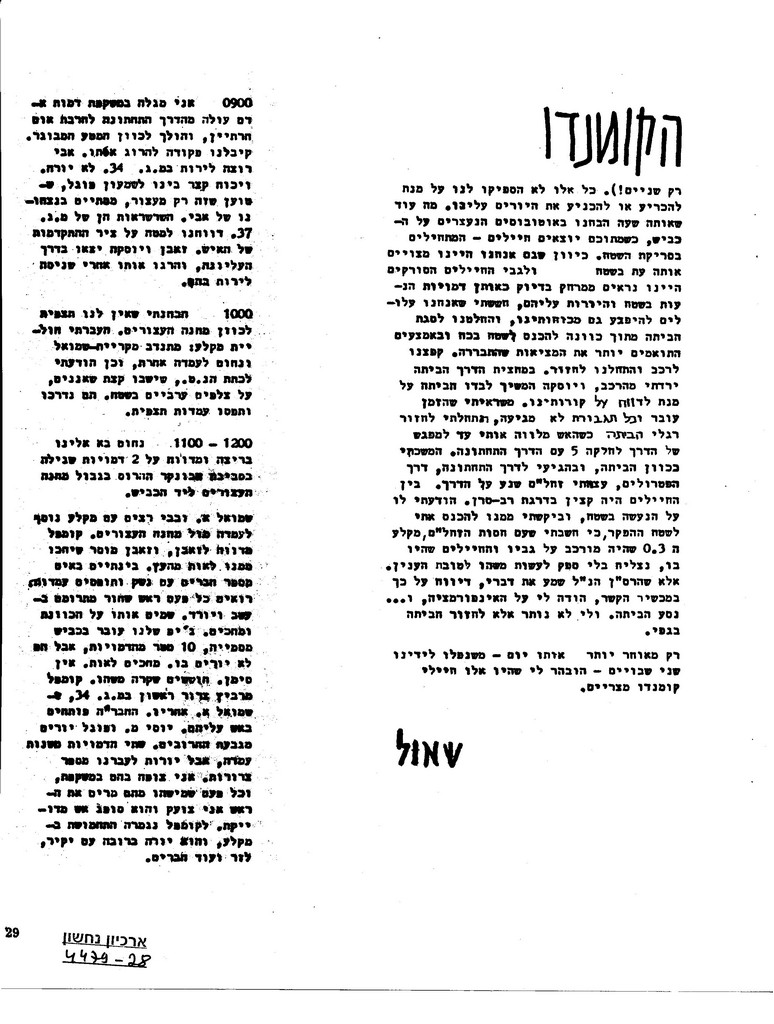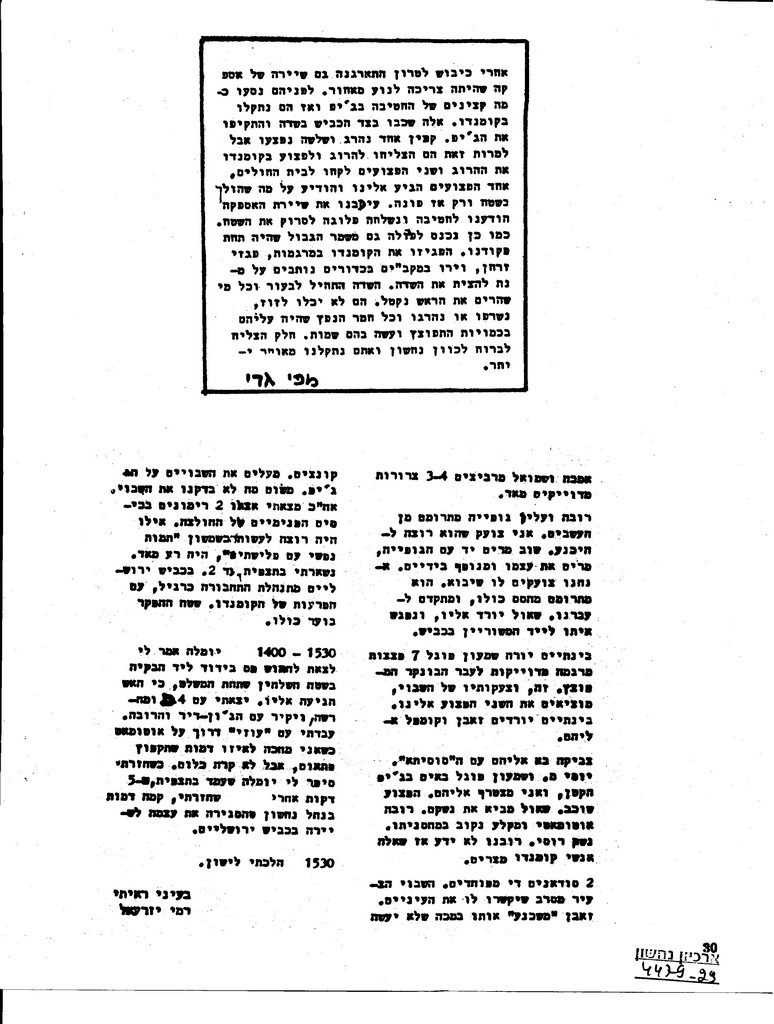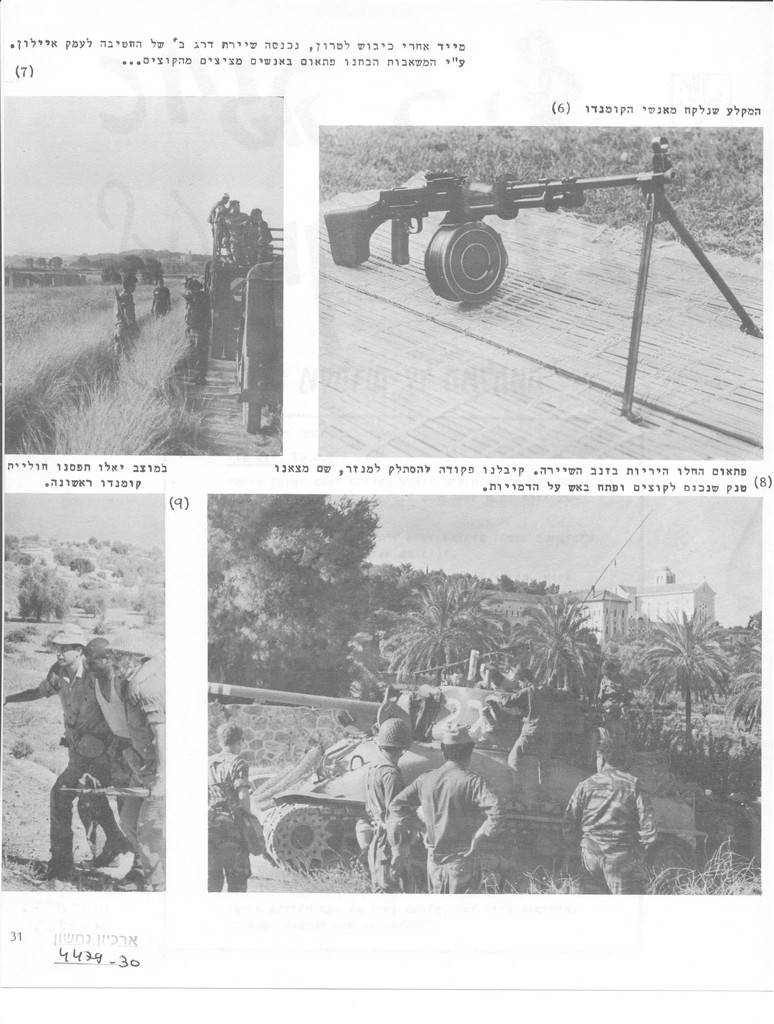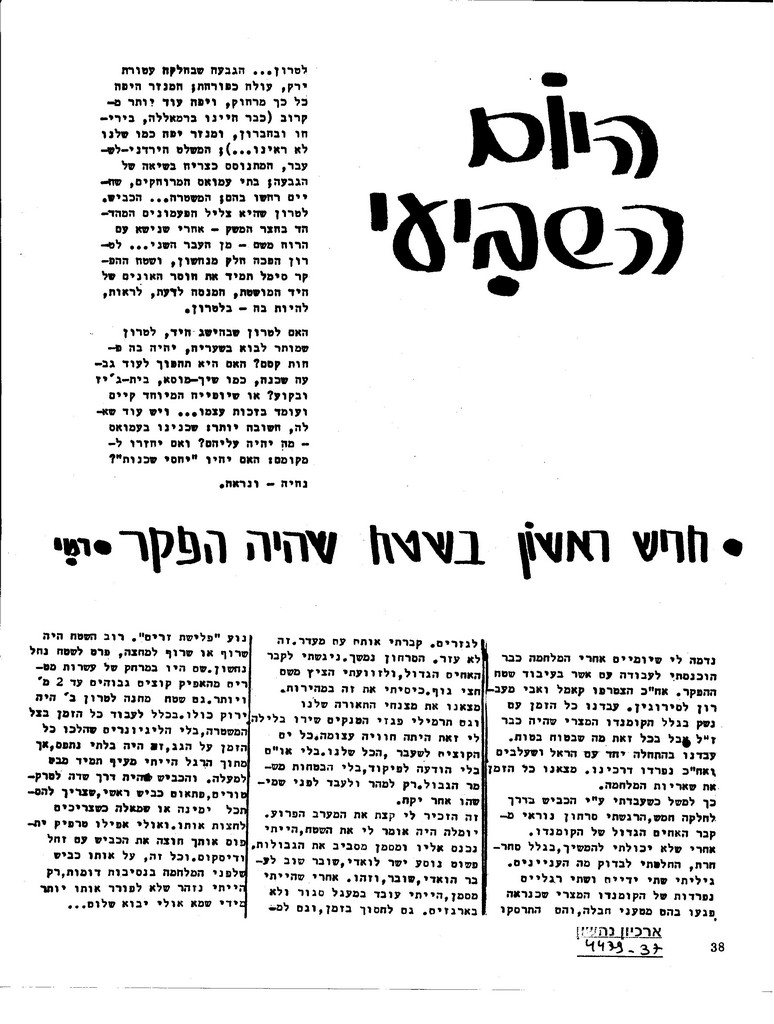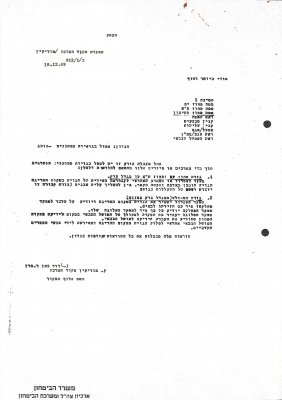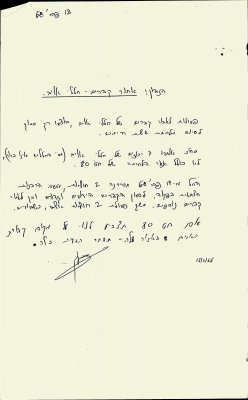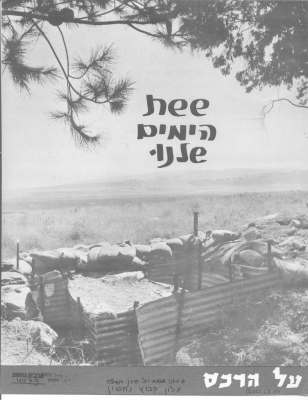Dozens of Egyptian commando soldiers killed in the 1967 War were buried in a mass grave near Kibbutz Nachshon, and they have remained there to this day. The Israeli Military Censor has now cleared for publication the findings of Akevot Institute’s in-depth research into the topic.
To read the article by Akevot researcher Adam Raz in the weekend edition of Haaretz, click here.
An unmarked mass grave near Kibbutz Nachshon likely contains the remains of dozens of Egyptian commando soldiers who fought alongside Jordanian legion forces near Latrun in the first days of the 1967 War. Of the roughly 100 combatants, around 80 were killed in a battle with IDF Division 4 and other Israeli forces. The remaining Egyptian soldiers were captured or fled with the refugees. Lieutenant Colonel (Ret.) Ze’ev (Zeban) Bloch, one of the founders of Kibbutz Nachshon, and the commander of the Latrun area at the time, wrote in the kibbutz newspaper that “after the war, I still found bodies scattered on the Latrun hills. I was given a shovel to bury some of them. Some were buried by the [Latrun Monastery] monks.” Zeban and others believe the mass grave is still there.
In the decades that followed the establishment of the State of Israel, there were no set protocols on handling the remains of fallen enemy soldiers. This was true for Palestinians killed in 1948: bodies of Palestinian combatants and civilians were usually buried near the place where they were killed, often by the Haganah/IDF or by local Palestinians in areas that remained populated by Palestinians. The bodies of enemy soldiers killed in battle were repatriated sporadically and rarely, through the International Committee of the Red Cross (ICRC). A comprehensive, organized system for returning non-Israeli casualties was put in place only after the 1973 War with the establishment of the IDF’s Eitan unit, which specializes in locating and recovering missing soldiers.
A Central Command Headquarters document from December 1949 on handling the bodies of “infiltrators” (a term used by Israel to refer to Palestinian refugees who entered the country in the 1950s, often seeking to return to their homes, visit family members who remained in Israel, or cultivate their lands) lists two options. If the “infiltrators” were killed in areas without Palestinian residents, “the commander of the patrol or stakeout is responsible for the immediate burial of the corpse at the killing site[.] The corpse will be buried in the ground and covered with dirt” (emphasis added). If they crossed the border near the Triangle area, “The Military Governor is responsible for removing the corpse from the killing site and handing it over to the Arab villagers.”
As Prof. Liat Kozma and Dr. Benny Nurieli (Hebrew) uncovered, bodies of Palestinian refugees were also apparently handed over to Israeli hospitals for research. Kozma and Nurieli showed that In June 1952, the Israel Police National Headquarters issued an order to hand over unclaimed corpses to the medical school, including the bodies of “infiltrators.” The move was criticized, with the Minister of Health at the time objecting on the grounds that, “It would be a colossal error if we used only Arabs’ corpses for this purpose, particularly when Arab students will attend the school as well.”
Enemy casualties were buried where they were killed during the 1967 War as well. A military document from 1968 on the topic of “Grave location – fallen enemy soldiers” states: “Action to locate the graves of fallen enemy soldiers was undertaken only near the end of the Six Day War. A total of seven concentrations of fallen enemy soldiers have been found (the number of dead is unclear) […].” Was one of those sites the mass grave of Egyptian commando soldiers in Plot 5? The document does not specify.

